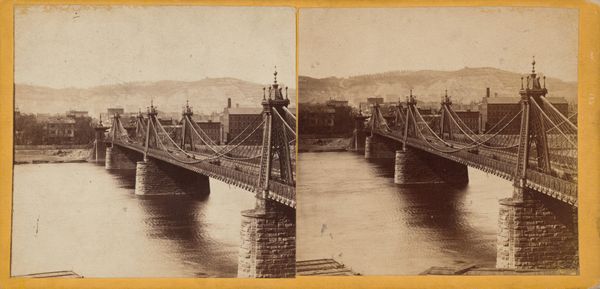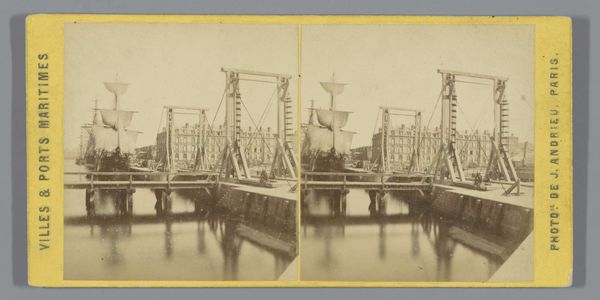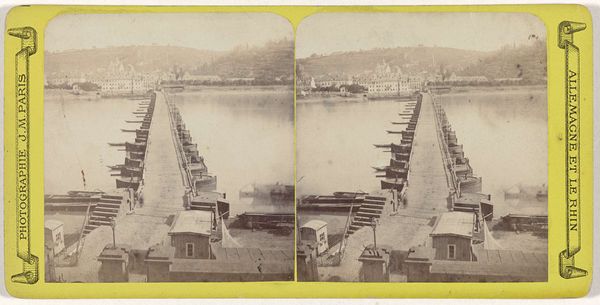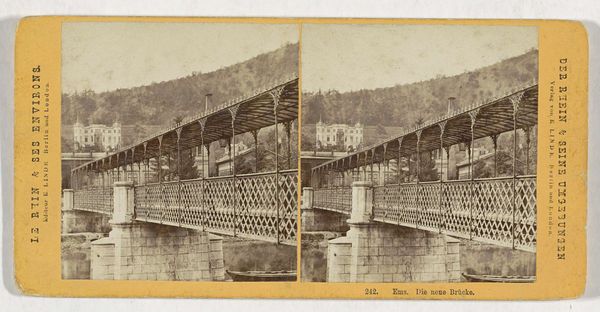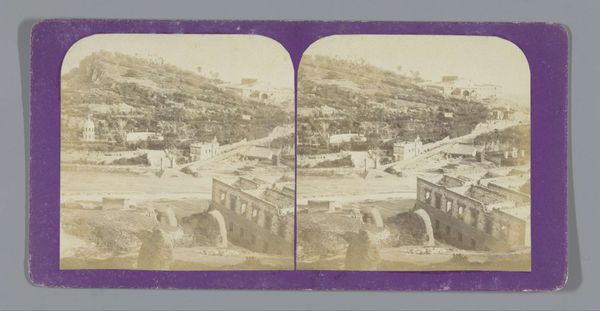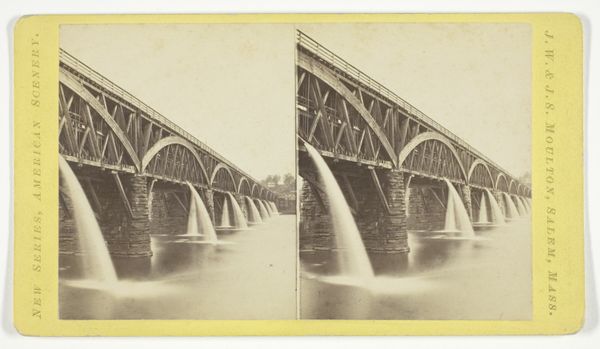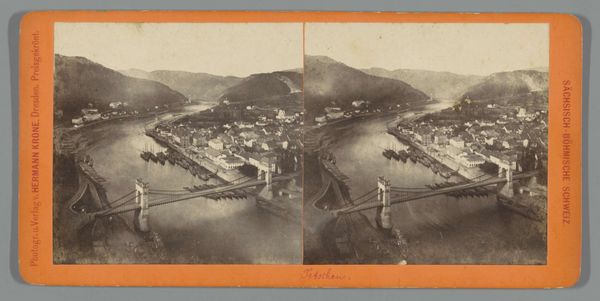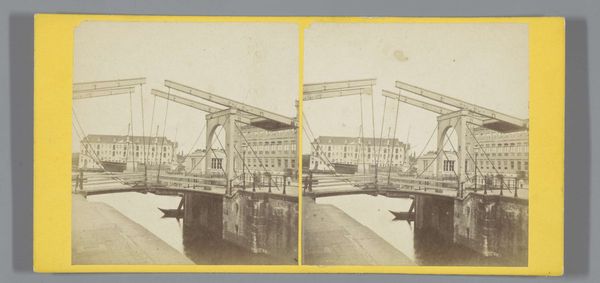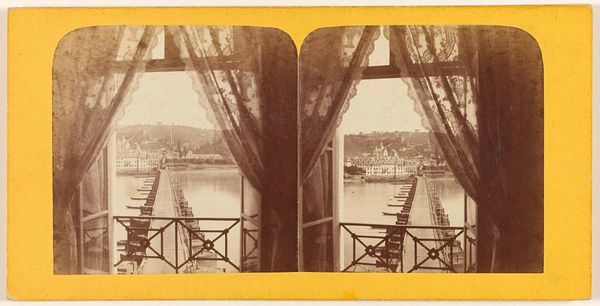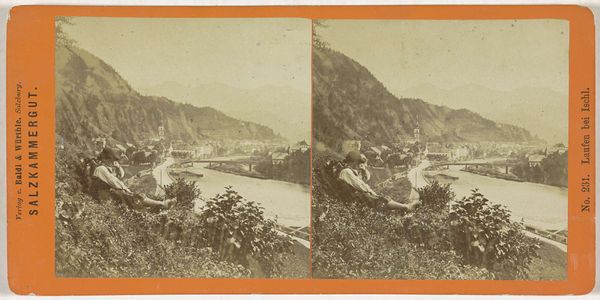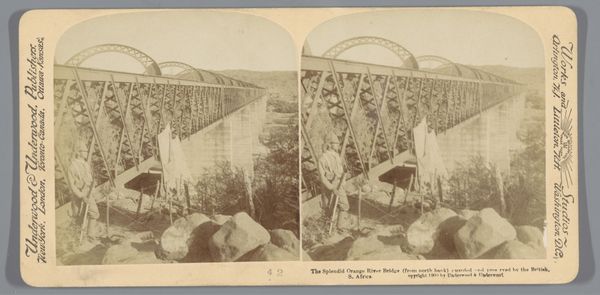
Dimensions: height 85 mm, width 174 mm
Copyright: Rijks Museum: Open Domain
Charles Gaudin captured the Keizer-Frans-I-brug over de Moldau in Prague with a stereoscope, a device that creates a single three-dimensional image from a pair of photographs. In the mid-19th century, as Europe underwent rapid industrialization and urbanization, photography emerged as a powerful tool for documenting and disseminating images of progress and modernity. This image embodies the period's fascination with engineering and infrastructure. Bridges, in particular, were potent symbols of connection, facilitating trade, communication, and cultural exchange. The Keizer-Frans-I-brug, named after Emperor Franz I of Austria, not only served as a physical link between different parts of Prague but also represented the political and economic ties between the city and the Austro-Hungarian Empire. As you look at the three-dimensional effect, consider the ways in which bridges can unite or divide communities, and the complex histories they often embody.
Comments
No comments
Be the first to comment and join the conversation on the ultimate creative platform.
